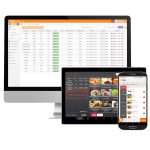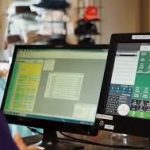How to Use Retail Analytics to Win Sales: 3 Real-Life Examples
Any small retailer in the business of selling knows that attracting new customers, retaining existing ones and selling more are crucial to achieving the holy grail of business—long-term profitability.
Given the rapid change of pace and competition in the retail landscape, it’s no longer enough to just open a store and expect profits to roll in.
Retailers need to be firing on all cylinders. This means knowing who their customers are, what they want and most important of all, offering them the right products and services at the right prices and right time.
In order to do that, retailers need to be able to understand their customers at the deepest level in order to turn those insights into sales and profitability.
Yet, if our research is any indication, it appears that a majority of small and midsize businesses (SMBs) are in the dark about who their customers are, much less what they are looking for.
That means that over half of retailers aren’t equipped to make data-based decisions on customer experience and store strategies, a capability likely to boost sales significantly.
SMBs that don’t use retail and customer analytics are still following the old pattern of guesswork to attract customers. As a result, they’re missing out on using a trove of data to make informed decisions to boost sales.
A wealth of customer data may be out there, but without a POS system or software to analyze that, you might as well be flying blind.
The good news is that at least half of retailers recognize the value of analytics. Of the single-store retailers who contacted our advisors in the past year, over half requested sales reporting and analytics capabilities.

Unfortunately, over half of retailers lack the technology needed to make data-based decisions to drive sales.

Small retailers that benefit from the customer analysis that POS systems and other software equivalents provide will be able to reach specific customers with targeted marketing and promotional campaigns that win sales.
Here, we’ll look at three retailers that have implemented customer analytics to drive profits and show you how to apply the same tactics to achieve similar results.
Here’s what we’ll cover:
Baublebar: Introducing On-Trend Designs From Data-Informed Insights
Marconi’s Beach Outfitters: Positioning Best-Selling Products Increases Customer Loyalty
Zookies Cookies: Tapping Into Nationwide Pet Insurance’s Base
Next Steps and Recommendations
Baublebar: Introducing On-Trend Designs From Data-Informed Insights
 Founders Daniella Yacobovsky (left) and Amy Jain of Baublebar (Source)
Founders Daniella Yacobovsky (left) and Amy Jain of Baublebar (Source)The customer data it analyzes: Using its internally-built software, Baublebar’s marketing team drills down into the following customer metrics, and more:
- Age
- Geography
- Color preferences
- What customers are buying, as well as what products they have no interest in
By closely tracking these metrics, Baublebar can better understand what styles are resonating on the ground.
Social media also serves as a valuable resource for customer data. The company keeps a constant eye on what customers are sharing and talking about with their friends.
According to its founders, “The biggest driver of our success to date is our attention to our customer. We listen to her any way she talks to us, passively, or actively. We pay attention to how she is shopping our site and what she’s looking for.”
What it discovered: Rapidly changing trends means customers are always on the hunt for the next new thing. By wedding its data-driven insights with social media and customer conversations, Baublebar is able to accurately predict upcoming fashions and account for those trends in its designs.
This gives the company a significant leg up over competitors by providing unique offerings that are highly likely to reflect what customers want.
Another way Baublebar has been able to understand its customers is through its customer service and stylist team. In talking to customers through the phone or video chats, the team is is able to get crucial firsthand knowledge of what customers are after.
“Your customer’s talking to you constantly—where she’s clicking, what she’s engaging with, what she’s sharing—and as long as you’re paying really close attention, it allows you to build faster,” says Jain.
The results it achieved: Once a trend is targeted, the company can design and manufacture a new jewelry piece in only a week.
Baublebar’s compact supply chain—from the creation of a new piece of jewelry to shipping the finished product to a customer—takes as little as four weeks.
 Baublebar’s “Buried Bauble” email campaign (Source)
Baublebar’s “Buried Bauble” email campaign (Source)Every Monday and Friday, Baublebar marks the price of an item down between $10 and $20 and “hides” it on its website. It then sends a promotional email alerting customers with a clue to find the product.
“It got people through the door and excited about our products and is one of our many engagement efforts,” says Jain. The result? Ten percent of its customers participated in the promo. These customers also have a 20 percent higher lifetime order value than those who did not take part in the program.
Marconi’s Beach Outfitters: Positioning Best-Selling Products Increases Customer Loyalty
 Marconi’s founder Kyle Baptist, on the right (Source)
Marconi’s founder Kyle Baptist, on the right (Source)The customer data it analyzes: By looking at its customers’ demographic and price points using Vend POS, Marconi’s Beach Outfitters discovered a few key insights.
First, it identified its core customer base as young families with children. Next, it looked into the average spend to gauge what customers were comfortable spending. “This allows us to know what price points will work in our store,” says Kyle Baptist, CEO of the beach and water sports outfitter store.
What it discovered: From its POS system, Baptist was also able to see what its best-selling products were. Its homemade fudge emerged as one of the store’s top grossing products.
“We always knew it was popular, but our POS allowed us to see just how much we were selling and that customers were coming back more than once during their vacation,” says Baptist. “With this information, we realized we wanted to create more of a brand around our fudge business.”
 A social media promotion for Marconi’s Beach Outfitters’ Unicorn Fudge (Source)
A social media promotion for Marconi’s Beach Outfitters’ Unicorn Fudge (Source)On top of that, it also created an in-store concept called “Wellfleet Fudge Factor” alongside another marketing campaign targeted at the community of locals and tourists in Wellfleet, Cape Cod.
“We did a basic grassroots campaign posting signs and banners in heavily trafficked areas around town. Whenever anyone sees our sign, they’ll say, ‘We hear you have the best fudge on the Cape!’” says Baptist. Samples are then handed out which “always turns into sales” for the store.
Being located in a tourist town, Marconi’s has to deal with seasonal challenges. Customers come and go, and it can be difficult to get them to come back a year or more down the line.
The launch of its “Wellfleet Fudge Factor” marketing campaign has enabled Marconi’s to focus on its best products and build a following as a result.
“We have customers who love our fudge so much that they call us when they get home from vacation to see if we can ship them the fudge,” says Baptist. “We even have people come in the first day of their week-long vacations to request flavors that they’ve been craving,” he adds.
Since the launch of the marketing campaign, Marconi’s Beach Outfitters has seen a 20 percent increase in sales.
Zookies Cookies: Tapping Into Nationwide Pet Insurance’s Base
 Zookies Cookies partners with Nationwide Pet Insurance on email and social marketing (Source)
Zookies Cookies partners with Nationwide Pet Insurance on email and social marketing (Source)The customer data it analyzes: Zookies Cookies uses Shopify and Google Analytics to get a better understanding of its dog-loving customer base. The company analyzes basic demographic information such as:
- Who its customer base is
- Customers’ past purchase activity
- Geographical information
- The number of returning customers
- How many times a potential customer visits its online store before making a purchase
“One thing in particular that’s been helpful for our growth is learning how many folks purchase as gifts, instead of for their own pets. That’s really helped us shape our retail strategy as well,” adds Tom Simon, its chief marketing officer.
The results it achieved: Using Shopify, Zookies Cookies was able to learn more about the flavors its customers were interested in. “That was a big help for us in early production to make sure we weren’t overdoing it on flavors that tended to move a little slower,” says Simon.
Additionally, Zookies found out that most of its customers are existing customers of Nationwide Pet Insurance. “As a result, we’ve been able to run campaigns with discounts targeted specifically to their customer base and have seen strong sales as a result. Their customers trust Nationwide, which helps drive value to our products as well,” says Simon.
Recommendations and Next Steps
Digging deep into customer data can give you a big-picture view of who your best customers are and how you can harness that loyalty through marketing campaigns. Here are some recommendations for how you can do the same:
- Collect basic customer data—and then some: If you already have a POS system, make sure to collect the basics, such as name, contact details and age. As Baublebar demonstrates, the more intel you collect, the more you know about your customer, the more targeted your promotions can be. That way, you’ll be able to reach these customers with a variety of focused marketing campaigns to lift sales.
- Identify your best-sellers and promote them: After identifying that its homemade fudge was a top-seller, Marconi’s capitalized on its success with an email and social media campaign. The result? A 20 percent increase in sales. Make analytics work for you by using it to inform what product you should be pushing in your next campaign.
Here are some next steps you can take to start acquiring that data:
- Don’t have a POS system? You can check out user reviews of popular retail POS software on our site. Or you can answer a few questions and speak with one of our expert retail advisors, who will provide free advice on what’s the best fit for your business.
- Data means nothing if you don’t apply it: Retailers can learn a lot about their customers just by looking at the data within their POS systems.
Whether you already have a POS or are looking for one, be sure to thoroughly explore its features and set up a chat with your vendor to learn about what metrics you can track and how you can do it.
Knowing your customer and drawing the right conclusions to implement an effective marketing campaign can make all the difference between success and failure.

 Previous Post
Previous Post Next Post
Next Post